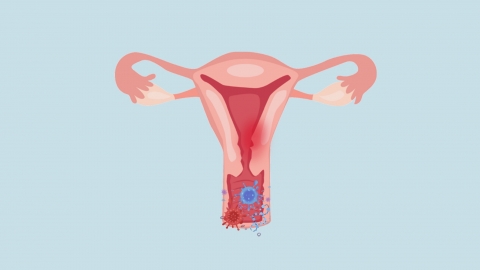What does it mean when the lesion disappears after a cervical biopsy?
In general, the disappearance of cervical lesions after a cervical biopsy may be due to immune clearance by the body, limitations in sampling during examination, clearance of low-risk HPV infection, healing of cervicitis, or regression of cervical intraepithelial neoplasia. If abnormal bleeding or other discomfort occurs, it is recommended to promptly return to a qualified hospital for follow-up. Specific causes are analyzed as follows:

1. Immune Clearance by the Body
After recognizing abnormal cervical cells, the body's immune system activates mechanisms to gradually eliminate these cells, leading to lesion regression. Maintaining regular sleep patterns (avoiding late nights), eating a balanced diet rich in protein, and engaging in moderate exercise such as brisk walking can help enhance immune function.
2. Sampling Limitations During Examination
A biopsy involves taking only a small tissue sample, which may miss the core area of the lesion; thus, residual lesions might not be detected upon re-examination. Follow your doctor’s advice to undergo regular cervical TCT and HPV testing. Repeat biopsies may be necessary when needed to ensure comprehensive evaluation.
3. Clearance of Low-Risk HPV Infection
Mild cervical changes caused by low-risk HPV infections may resolve spontaneously once the virus is cleared. Under medical guidance, treatments such as recombinant human interferon α2b gel, Baofukang suppositories, or Kangongyan tablets may be used. Personal hygiene should be maintained to prevent cross-infection.
4. Healing of Cervicitis
Pseudo-lesions caused by inflammatory stimulation can resolve as inflammation subsides and cervical tissue returns to normal. Under medical supervision, medications such as cefuroxime axetil tablets, azithromycin dispersible tablets, or Gynecological Qianjin tablets may be prescribed. Avoid tub baths during treatment.
5. Regression of Cervical Intraepithelial Neoplasia (CIN)
Mild cervical intraepithelial neoplasia may naturally regress, with abnormal cells gradually transforming back into normal cells. Under medical guidance, treatments such as recombinant human interferon α2a suppositories, Gongyanping capsules, or levofloxacin tablets may be used. Regular follow-ups are essential, and cervical conization may be considered if progression is observed.
In daily life, maintain cleanliness and dryness of the external genitalia and avoid unhygienic sexual practices. Have a stable sexual partner to reduce the risk of HPV infection. Quit smoking and limit alcohol consumption to maintain a healthy lifestyle. Strictly adhere to medical advice for regular gynecological examinations to monitor cervical health.




